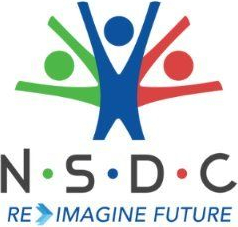The CAPTCHA Arms Race

From distorted text to complex visual challenges, the advent of smarter AI has much impact on CAPTCHA effectiveness. Finding balance is the key
If you had to take a step back and think about the number of times you have had to pick out traffic lights or crosswalks from a series of images before gaining entry into a website/completing a task, it is likely the answer hinges on anything greater than one to, at most, a million (?).
The seemingly innocuous CAPTCHA, or “Completely Automated Public Turing test to tell Computers and Humans Apart,” has become a reflection of the ongoing struggle between humans and machines. Originally designed as a type of challenge–response test used in computing to determine whether the user is human in order to thwart spammers, hackers, and malicious bots, CAPTCHAs have transformed over the years, presenting users with increasingly complex challenges.
Today, the impact of artificial intelligence (AI) on the effectiveness of CAPTCHAs has been massive, as they continue to grapple with achieving the intricate balance between usability, security, and effectiveness
CAPTCHA-ing History
The history of CAPTCHAs reveals a trajectory of adaptation to technological advancements. Initially relying on distorted text, CAPTCHAs pivoted to image identification when text recognition became trivial for machines. However, as AI capabilities expanded to excel in image recognition, CAPTCHAs escalated to more intricate visual challenges. The emergence of CAPTCHAs like Google’s reCAPTCHA v3, incorporating pre-click activity monitoring, reflects an attempt to integrate non-intrusive security measures.
Despite the evolving nature of CAPTCHAs, challenges persist. The study conducted by UC Irvine and Microsoft indicates that bots can already outperform humans in solving certain CAPTCHA puzzles. The consequence of this ongoing struggle is not merely inconvenience; it extends to potential exclusion of users. Factors such as age, language proficiency, and accessibility concerns contribute to the diverse ways users interact with CAPTCHAs, with potential consequences for those who fail the tests.
The AI Influence – How Hard is Too Hard?
CAPTCHAs operate within the framework of a classic business adage: “Fast, cheap, or good — you can pick two.” In the realm of CAPTCHA design, the triad consists of security, usability, and accuracy. Usability, the most visible aspect, demands that CAPTCHAs be user-friendly for a diverse audience. However, making them too accessible increases the risk of bots deciphering the puzzles. The challenge intensifies as AI capabilities advance, rendering conventional CAPTCHAs increasingly vulnerable.
So, the obvious solution is to make them more difficult to decipher for bots (all the while keeping it simple enough for humans to complete without the user trying to throw a chair at their screens).
While it seems rather simple, the solution is hardly so. US-based Arkose Labs, a prominent CAPTCHA creator, openly acknowledges that its puzzles are crafted to thwart machine learning algorithms. As AI progresses, CAPTCHAs must evolve to maintain their efficacy. The struggle is evident in the escalating complexity of CAPTCHA tasks, such as rotating 3D animals, a task deliberately designed to outsmart AI. The arms race between CAPTCHA designers and AI technologies highlights the constant need for innovation to stay one step ahead of automated threats.
Can CAPTCHAs continue to adapt?
As CAPTCHAs grapple with the dilemma of remaining user-friendly while enhancing security against AI, the question arises: Can CAPTCHAs continue to adapt without compromising usability? The push for innovative solutions, including non-visual alternatives and improved activity monitoring, signifies an industry-wide effort to strike a balance. However, the spectre of an AI-dominated future raises concerns about the longevity and effectiveness of CAPTCHAs in safeguarding online spaces.
In the perpetual battle against automated threats, CAPTCHAs stand as a front line of defence, adapting to the relentless progress of AI. The intricate dance between usability, security, and the ever-expanding capabilities of machines underscores the evolving nature of digital security measures. As we continue to navigate this complex landscape, the future of CAPTCHAs will likely hinge on the industry’s ability to innovate and devise solutions that preserve both user experience and the integrity of online platforms.


